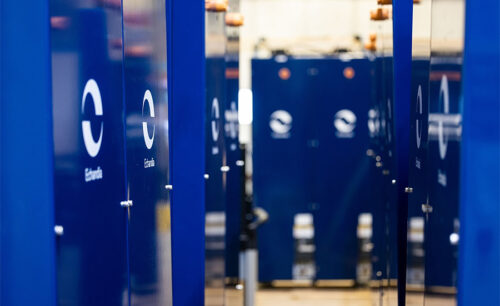

Fit for 55 – a game changer for the maritime industry?
- Insights
- 12 August 2021
As a part of the European Green Deal – the proposal from the EU-commission, dubbed ‘Fit for 55’ is a big deal for the maritime industry. The 280-page document, officially called: “REGULATION OF THE EUROPEAN PARLIAMENT AND OF THE COUNCIL on the use of renewable and low-carbon fuels in maritime transport”, provides a regulatory framework and actual measures to facilitate planning and long- term investments in the maritime sector
This will result in increased focus and activity from shipowners and operators to accelerate their decarbonization.
Here’s why ‘Fit for 55’ is important:
- Maritime transport accounts for around 75% of EU external trade and 31% of EU internal trade volumes. It is an essential part of the European transportation system and plays a critical role in the European economy. Around 400 million passengers come to EU ports every year, including around 14 million on cruise ships.
- At the same time, ship traffic in the EU accounts for 11% of all EU CO2 emissions from transport and 3-4% of total EU CO2 emissions.
What are the goals of ‘Fit for 55’
The proposal outlines a plan to cut greenhouse gas emissions within the EU by at least 55% by 2030 compared to 1990 levels. Along with several other initiatives, this indicates a clear ambition to put the EU on a path to be climate neutral – which means a 90 % reduction in transport emissions by 2050.
The most important technology development and deployment must happen by 2030 to prepare for much more rapid change in the years 2030 to 2050.

The EU’s pathway to sustained economic prosperity and climate neutrality, 1990-2050. Source: COM (2020) 562 final. Commission Communication “Stepping up Europe’s 2030 climate ambition Investing in a climate-neutral future for the benefit our people.
From a maritime perspective, the goal is to ramp up the use of renewable and low-carbon fuels (RLF) to 6-9% by 2030 and 86-88% by 2050. (RLF includes liquid biofuels, e-liquids, decarbonized gas (including bio-LNG and e-gas), decarbonized hydrogen, decarbonized hydrogen-derived fuels, including methanol, and ammonia and electricity).
The hurdles towards a zero-emission future
The maritime sector today relies almost entirely on fossil fuels.
As change becomes more urgent, it is increasingly apparent that any progress made thus far has been slow and insufficient. As with most industries, infrastructure, dependencies, and ways of working are set in stone and usually hard to change. Certain factors exacerbate this, like lack of information on future regulatory requirements and the long lifespan of vessels and bunkering infrastructure, slowing down potential progress.
In the ‘Fit for 55’–report, the hurdles to change the maritime industry are analyzed in detail. One of the most important is fuel costs and the lack of viable alternatives.
The cost of fuel ranges from around 35% of the freight rate of a small tanker to around 53% for container/bulk vessels. The price of alternative fuels needs to be competitive to be favorable for operators.
Additionally, the relatively low maturity of viable alternatives to fossil fuels also means investment risks for owners and operators.
What are the major initiatives in ‘Fit for 55’
The broad objective of ‘Fit for 55’ from a maritime standpoint is to create a clear regulatory framework to make long- term investments in the maritime sector more favorable and increase market demand ´for renewable and low-carbon fuels.
The EU proposal lays out a ‘basket of measures’ within the following policy areas
- Increase the uptake of renewable and low-carbon fuels (RLF) that are being used
- Stimulate the introduction of true zero-emission solutions
- Certify, report, and enforce
The ‘Fit for 55’ package will also complement other initiatives to address maritime emissions. The fact that the cost of RLF is higher than fossil fuels is a barrier to their uptake.
Including maritime transport in the EU Emission Trading System (ETS), as well as the Energy Taxation Directive (ETD) will ensure that the price of transport reflects the impact it has on the environment.
An increased demand will facilitate the production and use of mature options and stimulate technology development.
Measures will be goal-based and leave specific technology choices to the market with incentives to shipowners and operators to overachieve in quicker reaching a higher level of RLF and zero-emission solutions.
Zero-emission technologies, such as batteries and fuel cells will be additionally incentivized (with so called multipliers) to reward shipowners that pushes the goals that are set.
At Echandia – our ambition is to innovate and deliver globally usable and affordable zero-emission solutions. The complex but critical nature of the maritime industry and ecosystem means it needs a political push in the right direction to change.
We will continue to follow the progress of the ‘Fit for 55’-proposal and follow up this post with more insight and analysis as things develop.


